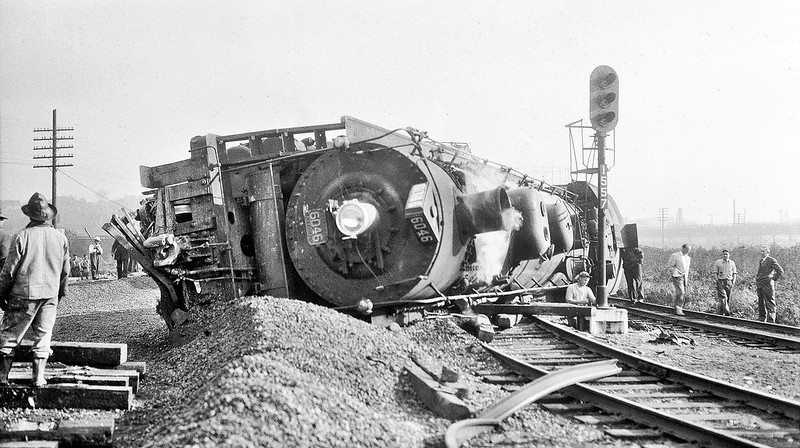Archive for January, 2025
How To Make Progress
 Improvement is progress. Improvement is always measured against a baseline, so the first thing to do is to establish the baseline, the thing you make today, the thing you want to improve. Create an environment to test what you make today, create the test fixtures, define the inputs, create the measurement systems, and write a formal test protocol. Now you have what it takes to quantify an improvement objectively. Test the existing product to define the baseline. No, you haven’t improved anything, but you’ve done the right first thing.
Improvement is progress. Improvement is always measured against a baseline, so the first thing to do is to establish the baseline, the thing you make today, the thing you want to improve. Create an environment to test what you make today, create the test fixtures, define the inputs, create the measurement systems, and write a formal test protocol. Now you have what it takes to quantify an improvement objectively. Test the existing product to define the baseline. No, you haven’t improved anything, but you’ve done the right first thing.
Improving the right thing to make progress. If the problem invalidates the business model, stop what you’re doing and solve it right away because you don’t have a business if you don’t solve it. Any other activity isn’t progress, it’s dilution. Say no to everything else and solve it. This is how rapid progress is made. If the customer won’t buy the product if the problem isn’t solved, solve it. Don’t argue about priorities, don’t use shared resources, don’t try to be efficient. Be effective. Do one thing. Solve it. This type of discipline reduces time to market. No surprises here.
Avoiding improvement of the wrong thing to make progress. For lesser problems, declare them nuisances and permit yourself to solve them later. Nuisances don’t have to be solved immediately (if at all) so you can double down on the most important problems (speed, speed, speed). Demoting problems to nuisances is probably the most effective way to accelerate progress. Deciding what you won’t do frees up resources and emotional bandwidth to make rapid progress on things that matter.
Work the critical path to make progress. Know what work is on the critical path and what is not. For work on the critical path, add resources. Pull resources from non-critical path work and add them to the critical path until adding more slows things down.
Eliminate waiting to make progress. There can be no progress while you wait. Wait for a tool, no progress. Wait for a part from a supplier, no progress. Wait for raw material, no progress. Wait for a shared resource, no progress. Buy the right tools and keep them at the workstations to make progress. Pay the supplier for priority service levels to make progress. Buy inventory of raw materials to make progress. Ensure shared resources are wildly underutilized so they’re available to make progress whenever you need to. Think fire stations, fire trucks, and firefighters.
Help the team make progress. As a leader, jump right in and help the team know what progress looks like. Praise the crudeness of their prototypes to help them make them cruder (and faster) next time. Give them permission to make assumptions and use their judgment because that’s where speed comes from. And when you see “activity” call it by name so they can recognize it for themselves, and teach them how to turn their effort into progress.
Be relentless and respectful to make progress. Apply constant pressure, but make it sustainable and fun.
Image credit — Clint Mason
It’s not about failing fast; it’s about learning fast.

No one has ever been promoted by failing fast. They may have been promoted because they learned something important from an experiment that delivered unexpected results, but that’s fundamentally different than failure. That’s learning.
Failure, as a word, has the strongest negative connotations. Close your eyes and imagine a failure. Can you imagine a scenario where someone gets praised or promoted for that failure? I think not. It’s bad when you fail to qualify for a race. It’s bad when you fail to get that new job. It’s bad when driving down the highway the transmission fails fast. If you squint, sometimes you can see a twinkle of goodness in failure, but it’s still more than 99% bad.
When it’s bad for people’s careers, they don’t do it. Failure is like that. If you want to motivate people or instill a new behavior, I suggest you choose a word other than failure.
Learning, as a word, has highly positive connotations. Children go to school to learn, and that’s good. People go to college to learn, and that’s good. When people learn new things they can do new things, and that’s good. Learning is the foundation for growth and development, and that’s good.
Learning can look like failure to the untrained eye. The prototype blew up – FAILURE. We thought the prototype would survive the test, but it didn’t. We ran a good test, learned the weakest element, and we’re improving it now – LEARNING. In both cases, the prototype is a complete wreck, but in the FAILURE scenario, the team is afraid to talk about it, and in the LEARNING scenario they brag. In the LEARNING scenario, each team member stands two inches taller.
Learning yes; failure no.
The transition from failure to learning starts with a question: What did you learn? It’s a magic question that helps the team see the progress instead of the shattered remains. It helps them see that their hard work has made them smarter. After several what-did-you-learns, the team will start to see what they learned. Without your prompts, they’ll know what they learned. Then, they’ll design their work around their desired learning. Then they’ll define formal learning objectives (LOs). Then they’ll figure out how to improve their learning rate. And then they’re off to the races.
You don’t break things for the sake of breaking them. You break things so you can learn.
Learning yes; failure no. Because language matters.
Image credit — mining camper
Happy, Lonely, Sad, Angry
 Happy – when you can bring your whole self to everything you do.
Happy – when you can bring your whole self to everything you do.
Lonely – when you’re with people all day but can’t be truthful with them.
Sad – when you see what could be but never will.
Angry – when someone is less than truthful.
Happy – when people you care about are treated well.
Lonely – when you’re misunderstood.
Sad – when you realize a person’s lack of truthfulness will make them lonely.
Angry – when you take things personally that aren’t personal.
Happy – when an old friend visits.
Lonely – when there’s no trust.
Sad – when you see someone break trust and you know that will bring them loneliness.
Angry – when you know someone should know better.
Happy – when someone asks you for help.
Lonely – when you know you can help but they don’t ask.
Sad – when someone is set up for failure and there’s no way to help them.
Angry – when that someone is a good friend.
Happy – when you have your health.
Happy – when you have fun with friends.
Happy – when you spend time outside.
Happy – when you walk your dogs.
Happy – when your kids and your partner love you.
Whether you’re happy, lonely, sad, or angry, this too shall pass.
Image credit – Tambako the Jaguar.
Time Travel Back to the Present
 If you don’t like what happened, now is the time to let it go.
If you don’t like what happened, now is the time to let it go.
If it already happened, it cannot be undone. Time travel is not yet possible. Let it go.
If you spend your energy complaining about the past, you won’t have enough for right now.
If you had no control over the outcome, what does it say if you beat yourself up about the outcome?
It’s not just uranium that has a half-life. Everything does. And so do you.
When you hold tightly to how things are, you get rope burns.
When you no longer have what you had, you can finally appreciate it for what it was.
An unplanned kick in the pants can help you jumpstart a new S-curve when you see it that way.
If you worry about what will happen, don’t. It hasn’t happened and likely won’t.
If you spend your energy worrying about the future, you won’t have enough for right now.
If you try to predict the consequences of bad fortune, you can’t. And it’s the same for good fortune.
Direct linear causality isn’t a thing when it comes to people systems. Propensity, yes. Causality, no.
How it will turn out has nothing to do with how you think it will turn out.
Trying to achieve the ideal future state is a waste of time. There’s no way to know what the Universe thinks is ideal.
The future is uncertain and there’s nothing you can do about it. You might as well not worry about it.
Who is standing in front of you? What if you spent all your energy with them right now? I bet they’d notice.
Who is sitting next to you? What if you treated them like they were the most important thing in your life right now? I bet they’d remember that experience.
What are you doing right now? Wouldn’t it be soothing to put all your energy into that task? Wouldn’t it be helpful to leave the rest for another time? Why not give it a go?
Wouldn’t it be pleasant to put all your energy into doing one thing in a row? Why not try it?
What if you put all your energy into doing the next right thing? Wouldn’t that eliminate some of your stress? Why not test it out?
How would it feel to be here now? Why not give it a try?
Image credit — Bobby Magee
Top Blog Posts of 2024
 Here are the top four blog posts from 2024 with a little summary of each.
Here are the top four blog posts from 2024 with a little summary of each.
It’s not the work, it’s the people. By far the most popular post. Here are some important words from the post: hard work, share, struggle, elbow-to-elbow, fear, crew, extra load, friend, through the wringer, smile, sad, care, easier. And I finished with a challenge.
For the most important people, take a minute and write down your shared experiences and what they mean to you. What would it mean to them if you shared your thoughts and feelings? Why not take a minute and find out? Wouldn’t work be more energizing and fun? If you agree, why not do it? What’s in the way? What’s stopping you?
Why not push through the discomfort and take things to the next level?
Projects, Products, People, and Problems. The post was written within the tight context of product development systems, but I think the tight one-liners have broader applicability. Here are a few of may favorites.
- To get more projects done, do fewer of them.
- Stop starting and start finishing.
- People grow when you create the conditions for their growth.
- When in doubt, help people.
- Trust is all-powerful.
- Whatever business you’re in, you’re in the people business.
Pro Tips for New Product Development Projects. This one was one was narrow and deep. Here are the main themes:
- Effectiveness is more important than efficiency, but we behave otherwise.
- Everyone has too many projects and that’s why they take so long.
- Resources – too highly utilized.
- Novelty – too much of a good thing isn’t wonderful.
I’m thankful! I wrote this for the Thanksgiving holiday. There were four themes: family, health, time, and telling people about your thankfulness. Family – straightforward. Health – appreciating our remaining health because we recognize it flowing away. This one is a little backward, but the Stoics know. And so does Buddha. Time – appreciation of our time, especially when others pull on us. Telling people about our thankfulness – this a great way to multiply the impact of our thankfulness.
Happy New Year and thanks for reading, Mike
Image credit — Anna Sofia Guerreirinho
 Mike Shipulski
Mike Shipulski